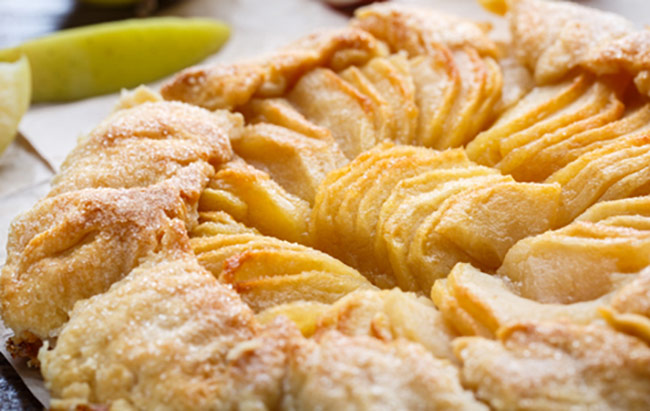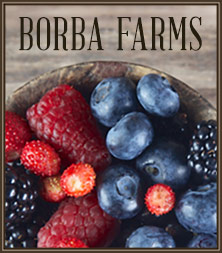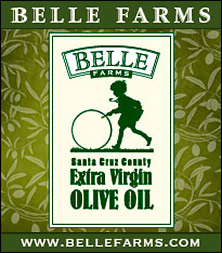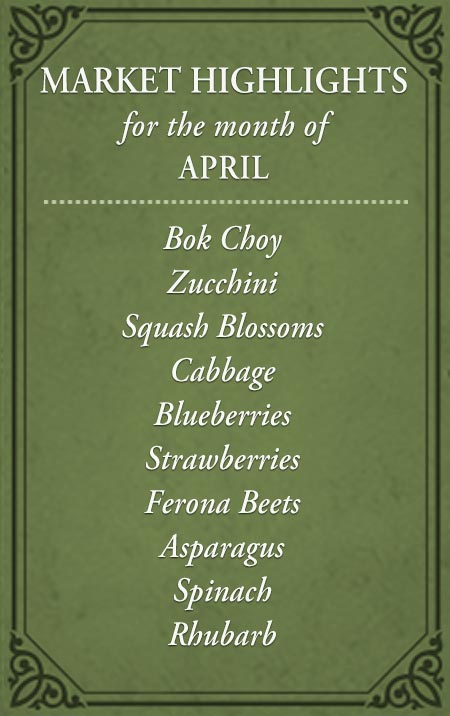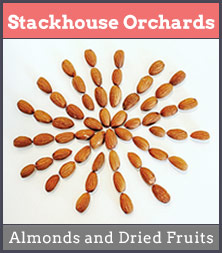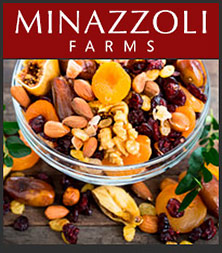I was a latecomer to the galette. Not quite a pie, and not quite a tart, this open-face pastry is made from a simple crust, a layer of fruit, and edges folded roughly around the filling. As a classically trained pastry chef, it didn’t initially appeal to me. I’m convinced most pastry chefs (and chocolatiers, too) carry a streak of perfectionism, honed through hours of piping identical swirls, cutting fruit into precise slices, and measuring pastries to exact dimensions. Precision was the goal—and often the obsession.
So when the rustic, free-form galette started appearing on food blogs, its casual folds and lack of symmetry disturbed my sensibilities. But when a chef I greatly admire published her version of an apple galette, I decided it was time to give it a try.
Her galette was beautifully rustic yet refined—edges folded neatly, brushed with egg wash, and sprinkled with sparkling sugar. For my first, I made a full butter crust, laminated for flaky layers, and sliced apples into thin, even wedges with their rosy skins intact for color. I tossed them with a blend of sugars, cinnamon, and vanilla, dusted the pastry base with flour to absorb juices, and arranged the fruit in a circular swirl. After folding in the edges, brushing with egg wash, and sprinkling sugar, I baked it until golden and fragrant. The result? Absolutely irresistible—especially topped with a scoop of vanilla ice cream.
The beauty of a galette lies in its simplicity and lack of perfection. As the single layer of fruit bakes, its natural sweetness concentrates, creating caramelized edges and syrupy juices with little added sugar required. The crisp, buttery crust is the perfect contrast to the tender fruit. Best of all, a galette feels almost guilt-free compared to pie: thinner, lighter, yet every bit as satisfying.
Another bonus—no strict recipe is required once you know the basics. Almost any fruit works: apples, pears, peaches, plums, berries, even tomatoes. Sweet fruits need minimal sugar, while tart fruits may need more. Try honey, maple syrup, or brown sugar for added depth. For a twist, drizzle caramel over apple or pear galettes, or season tomatoes with a touch of allspice or mace.
Practical tips: dust the dough with flour before adding fruit to prevent sogginess, line pans with parchment for easy cleanup, and move galettes off the paper shortly after baking.
And don’t overlook savory galettes—they’re wonderful as appetizers or light main courses. One of my favorites combines caramelized onions, pears or apples tossed with maple syrup, fresh thyme, and crumbled gorgonzola. Rustic, elegant, and endlessly adaptable, galettes deserve a regular place at the table.
APPLE GALETTE
INGREDIENTS:
For the Crust
1-1/2 cups all-purpose flour
1/2 teaspoon salt
2 tablespoons granulated sugar
1-1/2 sticks (12 tablespoons) very cold unsalted butter, cut into 1/2-inch pieces
1/4 cup very cold water
For the Filling
3 large apples, cored (and peeled, if desired), cut into 1/8 inch slices
1/4 – 1/3 cup sugar
1 teaspoon pure vanilla extract
1 teaspoon cinnamon
2 tablespoons unsalted butter, melted
1/8 teaspoon salt
For Assembling and Baking
1 tablespoon all-purpose flour
1 egg, beaten
1 tablespoon turbinado or sparkling sugar
METHOD:
Make the crust:
In the bowl of a food processor, combine the flour, salt, and sugar. Pulse briefly to blend.
Add the cold butter and pulse for about 5 seconds, just until the mixture resembles coarse crumbs with pea-sized bits of butter.
Sprinkle the ice water evenly over the mixture. Pulse again, about 5 seconds, until the dough is just moistened—it should hold together when pinched.
Turn the dough out onto a lightly floured surface. Gently press and knead a few times to bring it together into a ball. Pat into a rectangle, dust lightly with flour, and fold one-third of the dough toward the center. Fold the other side over the top, pressing firmly. Pat or roll gently into another rectangle and repeat the folding once more.
Shape into a disk, wrap in plastic wrap, and refrigerate until firm, at least 30 minutes.
On a floured surface, roll the dough into an 8–10 inch circle, dusting with flour and turning as needed to prevent sticking. Transfer to a parchment-lined baking sheet. Refrigerate while you prepare the filling—you’ll finish rolling it out directly on the parchment before assembling the galette.
Make the Filling:
Place prepared apples into a large bowl (you should have about 4 cups). Add the sugar, vanilla, cinnamon, melted butter, and salt and toss apples to coat all surfaces with the mixture.
Assemble the Galette:
Set oven to 350°F. Line a baking pan with parchment paper.
Remove the chilled dough from the refrigerator. On a lightly floured surface, roll it into a circle 8–10 inches in diameter, turning as you go and dusting with flour as needed to prevent sticking. Carefully transfer the dough to the prepared baking pan.
Sprinkle 1 tablespoon of flour evenly over the center of the pastry. Arrange the apple slices on top in overlapping concentric circles, leaving a 3-inch border around the edges. Work quickly to keep the dough cold.
Gently fold the edges of the dough up and over the apples, pleating as you go to form a rustic border.
Brush the folded edges with beaten egg using a pastry brush, then sprinkle lightly with turbinado or sparkling sugar.
Place in the oven and bake for 55–65 minutes, until the apples are tender and the crust is golden brown and fully cooked.
Transfer the pan to a wire rack to cool slightly. Using two large spatulas, carefully move the galette to a serving plate or cutting board. Slice and serve warm or at room temperature, plain or with a scoop of ice cream.
SOURCE: Recipe adapted from Jennifer Segal, Once Upon a Chef.


